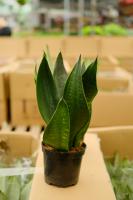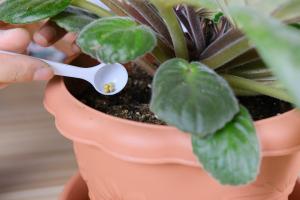How to Multiply Tomato Plants
Tomatoes are one of the most popular vegetables (though technically, they are a fruit) grown in home gardens. They are easy to grow and produce a bountiful harvest. However, if you want to expand your tomato garden or share your plants with friends, you'll need to learn how to multiply tomato plants. Here are some methods to propagate your tomato plants:
Method 1: Plant Division
Plant division is a simple method to multiply tomato plants. To do this, simply dig up a well-established tomato plant that has plenty of growth around its base. Carefully remove the plant from the soil and separate the root ball into several sections using a sharp, clean knife. Each section should have roots and growth. Replant each section immediately in the garden or in a pot filled with fresh soil. Water the new plants well and keep them in a warm, sunny spot.
Method 2: Stem Cuttings
Another popular method to multiply tomato plants is by taking stem cuttings. While this method takes a bit more skill than plant division, it is a great way to create multiple plants from one parent plant. Choose a long, healthy stem from the parent plant, and make a clean cut using a sharp knife. Remove the leaves from the lower part of the stem and dip the cut end into rooting hormone. Plant the cutting in a pot filled with fresh soil and keep the soil moist. Cover the pot with a plastic bag to create a humid environment. Keep the pot in a warm, bright spot, and when the cutting has rooted, transplant it to the garden.
Method 3: Suckers
Suckers are the small shoots that grow between the main stem and the branches of a tomato plant. Although some gardeners remove suckers to encourage larger fruit, they can also be used to create new tomato plants. Suckers can simply be removed from the main plant and planted in a pot or directly in the garden soil. Be careful not to damage the roots while removing the suckers, and be sure to keep the new plants moist and in a warm, sunny spot.
Method 4: Seed Saving
Finally, you can always multiply tomato plants by saving the seeds from ripe fruit. Simply scoop out the seeds from a ripe tomato, and place them in a jar with a small amount of water. Allow the seeds to ferment for a few days until they are slimy, then spread them out on a paper towel to dry. Once the seeds are completely dry, store them in a cool, dry place until you are ready to plant them. When planting the seeds, be sure to follow the planting depth and spacing guidelines on the seed packet.
In conclusion, there are several methods you can use to multiply tomato plants. Whether you choose to use plant division, stem cuttings, suckers, or seed saving, be sure to give your new plants plenty of attention and care as they grow.

 how many times do yo...
how many times do yo... how many planted tre...
how many planted tre... how many pine trees ...
how many pine trees ... how many pecan trees...
how many pecan trees... how many plants comp...
how many plants comp... how many plants can ...
how many plants can ... how many plants and ...
how many plants and ... how many pepper plan...
how many pepper plan...
































